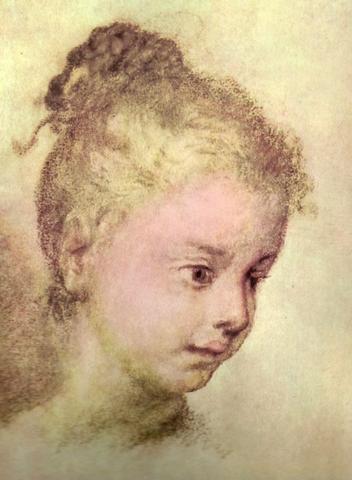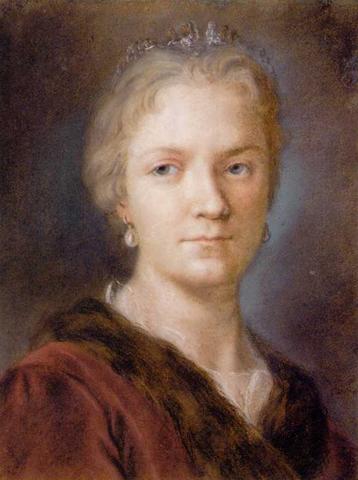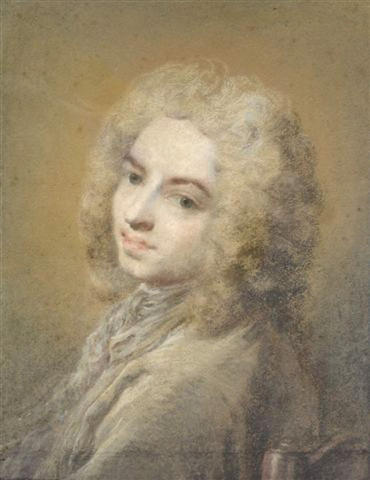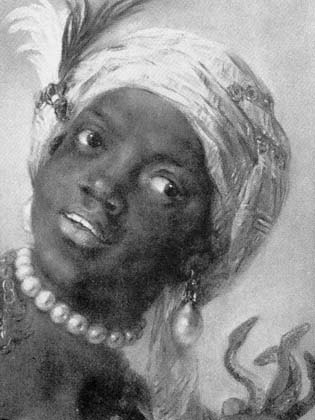Ellen and Jim Have a Blog, Too
We are two part-time academics. Ellen teaches in the English department and Jim in the IT program at George Mason University.


Vittoria Colonna & Rosalba Carriera, poet & painter · 9 July 08

Rosalba Carriera (1675-1757) Portrait of a Young Girl
Dear Friends,
What yokes these two subjects together tonight? They are great women artists before the 18th century and tonight are inspiriting me. First, I had planned as the first of my new series of blogs on woman painters, the work of Rosalba Carriera, and I found an image by her of herself I had not known before, one of herself self-possessed sometime in the early afternoon:

Rosalba Carriera, Self-Portrait
Then early this evening I was asked to review for Renaissance Quarterly a book on Vittoria Colonna by Abigail Brundin, Vittoria Colonna and the Spiritual Poetics of the Italian Reformation: Catholic Christendom, 1300-1700 (Ashgate); Brundin did an edition and translation into English of a group of Colonna’s poems in a manuscript now said to have been sent to Michelangelo. For Renaissance Quarterly. I will now read these 2 books at long last. Also, would I like to chair any panel on the March 2009 Renaissance Society meeting in LA? Would I? I said I can’t do 2009 in LA, but I’d be delighted to be on a panel for the spring 2010 meeting in Venice. My strong preference is for panels on women’s poetry, letters, & autobiography. Nothing was said in reply to my yes for the next year, but the book is now on its way.
I feel good to know my complete translation of Colonna’s poetry, life of her, and other materials on the Net are recognized in this way. Just the other day I saw that my article on the 6 poems by Anne Cecil is single-handedly responsible for the inclusion of Cecil’s poems in a recent anthology of Renaissance poetry: Women Poets of the Renaissance by Marion Wynne-Davies!
It’s also lovely to dream of going to Venice—and Carriera was a Venetian painter originally.
I said yesterday I would return to putting blogs up about women poets and painters. Rosalba Carriera is also a connective link between Renaissance and 18th century women, between English, Italian and French. This could be a Watteau:

Rosalba Carriera, La Chaise (The Chair)
According to Germaine Greer (The Obstacle Course), Rosalba Carriera was
the daughter of a poor Venetian public official and lacemaker, for whose lace she drew patterns. From this work she graduated to making snuff-boxes. He wonderful miniature portraits on ivory gained her admission to the Accademia de San Luca in 1705 … [eventually she gained many patrons and invitations to transfer
from Venice] but it was only when her [older] sister’s family was bound for Paris that she consented to accompany them in 1720. She was very successful in selling her paintings.
Her success in Paris was due partly to the salon culture of the period. Women were conspicuous in public life in salons by the 1720s. Her choice of medium with its “grace, delicacy, and lightness” were seen as feminine, and she was able to earn a living as a miniature portraitist. She was the elected to the Academie Royale de la Peinture in 1720. Four women before her had been elected (e.g., Elisabeth Sophie Cheron, 1672).
Of course her talent matters here too. Greer says she
“eschewed pompous detail and concentrated on the expressiveness of the countenances she observed. [Hers was an art] suited to the temper of the Enlightenment, warm, elegant, lively, unassuming.”
Rosalba Carriera, Afrika
It seems to me her art is one which captures a kind of shimmering quality. I’m afraid my reproduction does not do justice to this sense of sheer aliveness in the skin and texture of dress and atmosphere. Still I’ve chosen images other than the one which is so frequently reprinted of her holding a picture of her sister (they had a loving close relationship) because the reprinted one is so solemn and earnest, while the little girl, the boy and African child look at us with something of of these ephemerally (apparently) sad expressions, so intense too at the same time (unashamed) characteristic of younger children.
There is a very late self-portrait where she has a haunting expression (tired, intense) but I only have a small lack-and-white one of it. It’s said she supported her family; she instructed her two younger sisters in her art and one sister was a constant companion; she was much depressed when this older sister died. They had been beloved close companions, and it seems Giovanna was the most important person in Carriera’s life. We see her holding her sister’s portrait in the most familiar picture by her.
Carriera left a journal but (like Goethe’s published one?) it’s said to be “curiously untelling” (this I get from Karen Peterson and J. J. Wilson’s survey, Women Artists … from the early Middle Ages to the Twentieth Century).
When on my rock, in this dear solitude
my island, I gaze at the sky and earth
in a brilliant red dawn, my heart’s sadness
melts away. Brightness scatters confusion.
As the hours pass, a burden lifts from
my mind, my heart expands. Amid heaven’s
radiance I recall my beloved.
I feel restored and remember how he
sweetly sheltered me. I see Elijah,
not in the flaming chariot—but as
an inward golden light transforming the mind,
replacing this low sick wretchedness. A
flaming ray, and I feel that which tells me
something of the bliss of eternity.
by Vittoria Colonna as translated by me
Ellen
--
Posted by: Ellen
* * *
Comment
- From Fran:
“Congratulations on the invitations. Certainly hope they confirm your place on the Venice panel. I don’t know if you’ve visited Venice before, but I certainly found it as beautiful as report had it, even in the unusually arctic conditions we experienced it in.
Fran”
— Elinor Jul 10, 11:21am # - Dear Fran and all,
While the book is on its way, the invitation to chair a couple of panels was not renewed :). I suspect they need someone to chair in LA, but maybe not Venice. I will try to write a good review and re-bring it up then. I could go without being a chair; I could dare a paper :) There’s a sense in which I’ve left the Renaissance as a scholar (so to speak), just keep up enough to know where the conversations are. Early modern women at the MLA was awful this past year as they are trying to find things women did which were men-like and have returned to an entrenched conservatism at the same time as they are intensely defensive.
But Venice, ah, now that’s different. I gather Fran went in a cold time. I was in Italy twice, and once it was in April for a month or so. And Italy is cold in April plus in 1968 there seemed to be few concessions to cold in the rooms I was in. Maybe an electric heater in a corner. I froze in Florence. It was then I spent 3 days in Venice—by myself. I knew nothing, was alone, didn’t even have any Italian. So I didn’t know to go to Torcello or any of the so-called famous places, but I did wander about the streets and was entranced by the colors and quiet. Just like the paintings I kept telling myself. No cars. I went to museums, churches, looked at pictures, went on the vaporetto. I never got the nerve up to get on a gondola because I was alone. I did stay in a magnificent room in a pension with a huge bed with posters or pillars and lovely long windows. I felt like I was in a Henry James novel.
Years later going to a John Singer Sergeant exhibit I thought he captured the quality of the winding enclosed streets.
Jim has never been and would like to go.
Caroline and I used to read a child’s book together which was set in Venice: Melissa’s Friend, Fabrizio. It’s about a statue of a young boy just Melissa’s ago in the San Marco square. The statue comes alive and is her friend when no one is looking. I told Caroline if we went, I would try to find this statue, take a photo, and send it to her.
Ellen
— Elinor Jul 11, 9:50am #
commenting closed for this article

